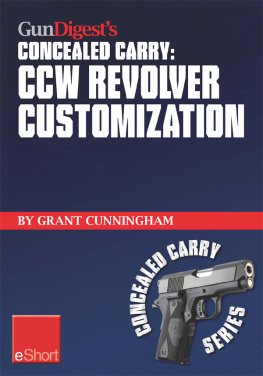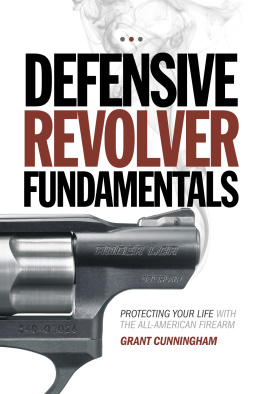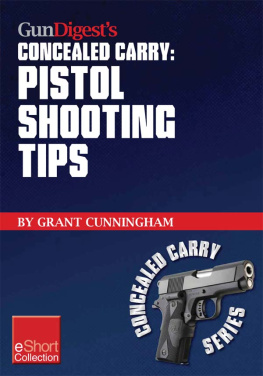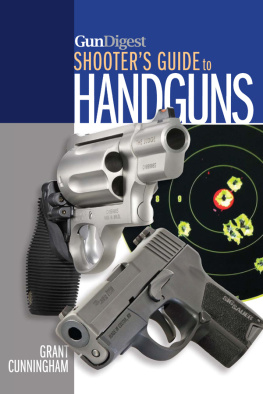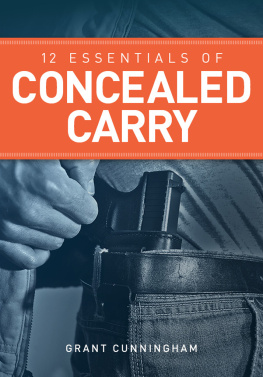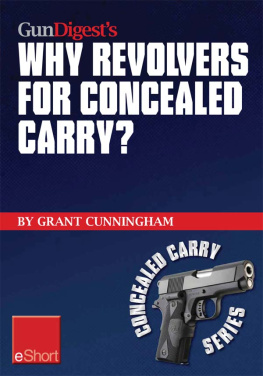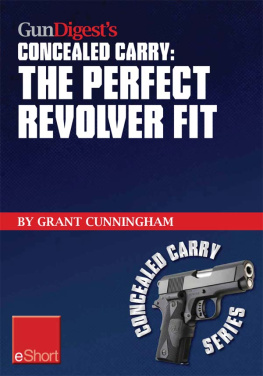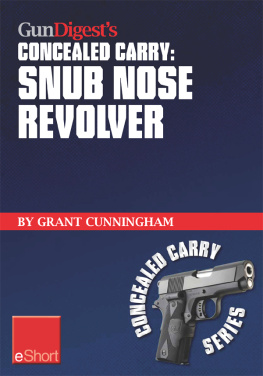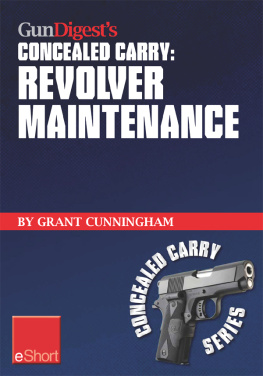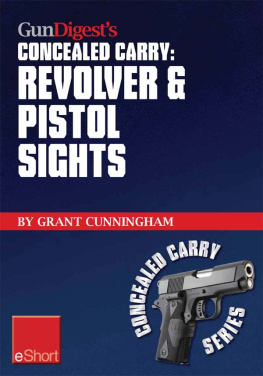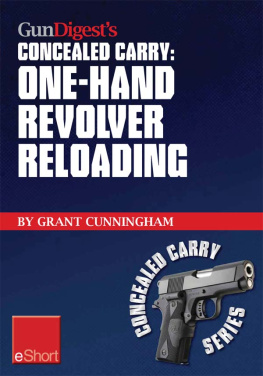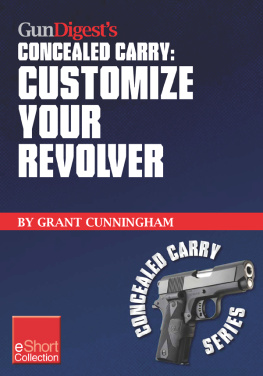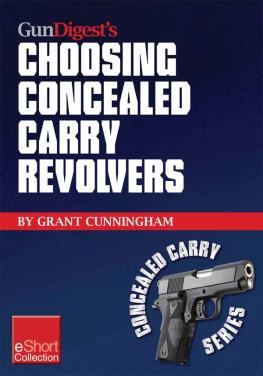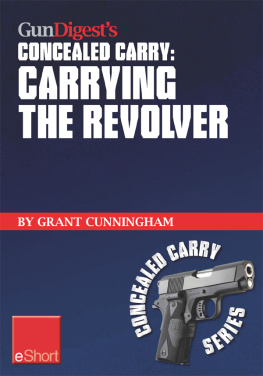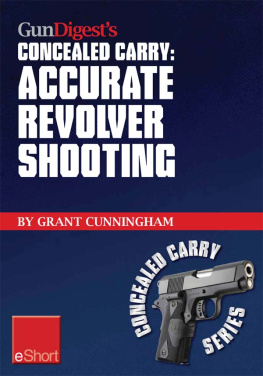Springs make a big difference in trigger effort, require careful selection and testing to verify reliable operation.
Firearms are surprisingly personal objects. Despite their origin as the first mass-produced items (via Whitneys invention of interchangeable parts) in the history of mankind, each one comes to hold strong meaning for its owner. It shouldnt be surprising that these highly personal objects are often further personalized.
Personalization can take the form of changes to increase the guns usability, to better fit the physique of the owner, or simply to make them better looking. No matter how good a product a factory produces, there are always those who want more and there are those who can oblige them by delivering more. We call them gunsmiths. Many gunsmiths can produce customized revolvers to meet just about any need or desire.
Start with the action
Making the gun easier to shoot well should be the first goal of any customization project. If it doesnt shoot well, why own it?
Many guns come from the factory with trigger actions that are less than ideal. While proper technique can go a long way to shooting such guns well, the fact remains that a quality action is easier for everyone to shoot.
Light hit on left-hand primer is result of too-light hammer spring. Proper primer indentation on right assures reliable ignition.
What makes for a good trigger?
We have to distinguish between double and single action, because they each have their own criteria. While this book concentrates on the double action, and I personally shoot just about everything in double action, there is a place for the single action capability of a revolver. If youre going to use it, you might as well get familiar with what makes for a good one.
Most aficionados would agree that a good single action starts with a light pull weight. While what constitutes the ideal weight is a matter of debate, most shooters would accept something in the neighborhood of three pounds as being a good baseline. A good single action should have little to no creep, which is any trigger movement before the sear releases. If the gun is cocked and you very slowly bring the trigger back, any felt movement prior to the hammer dropping is creep. Sometimes the creep is obvious because of roughness felt through the trigger, but it can be so smooth as to be nearly unnoticeable.
After the sear releases any further rearward movement of the trigger is called overtravel. All factory double action guns available today have a certain amount of overtravel, and it has the effect of making the trigger feel heavier than it really is. A single action trigger with no overtravel feels very light.
Overtravel is important determinant of practical accuracy. If there is substantial overtravel, the trigger may still be traveling backwards while the bullet is exiting the barrel. If the trigger is moving so is the trigger finger, and that can result in the muzzle veering slightly off of target alignment. This isnt a concern in most single action shooting, but in the high-accuracy games like metallic silhouette it can mean the difference between a hit and a miss at 200 meters.
The single action sear should release without any jumping or sudden movement of the trigger. Some triggers will release with what can only be described as a snap, the result of which is a slight movement of the gun just as the bullet is sent on its way. For this reason many people describe the ideal single action as feeling like breaking a thin glass rod. Youll see this glass rod term used in gun magazine articles and online.
Of course there is substantial variability in opinion. Sometimes what constitutes best comes down to personal preference. Some shooters dont mind a little creep, as long as it is perfectly smooth and doesnt call attention to itself, while others like having a slightly heavier trigger weight. It can be a matter of what one gets used to in other areas of shooting. People who shoot a lot of military rifles, in my experience, tend to prefer a slightly heavier trigger and dont mind some creep as long as its not gritty or rough.
From the standpoint of safety, having some creep and a slightly heavier trigger makes it a little less likely that an accidental discharge can happen. A cold or nervous finger is less likely to cause the gun to fire prematurely if the trigger travel is a little longer (which is what creep really is) and a little heavier. The lighter and shorter the trigger action is made, the more chance that push off can occur the unintentional dropping of the hammer without the trigger being operated.
A good gunsmith should be able to balance all of these aspects of the single action to make a gun thats safe and shootable.
Double action triggers are judged by their own criteria. The most important is the feel, how the finger perceives the triggers motion. A good double action trigger should not have any roughness or hesitation in its stroke, regardless of weight, either in compression or return. Many factory guns feel as though they have fine sand in the action, or as though youre running a stick down a picket fence. The shooter should not feel any evidence of parts sliding or rotating as the action operates.
A term youll often hear used to describe the feeling is like butter smooth, viscous. I liken it to the feeling of being in a rowboat, where the pulling of the oars makes the boat glide across the water; if not for the weight on the oar handles, you wouldnt feel anything except the sensation of movement.
For most people, the ideal double action trigger would be consistent in weight from start to finish; the term is linear. Some guns have a trigger that gets progressively heavier toward the end of travel, which is called stacking. Others start at one weight, increase dramatically in the middle of the compression, and abruptly decrease in weight just before the sear releases. (I call this the camel hump action, which makes sense if you think about it a minute.)
Some revolver shooters actually like a bit of stacking in their double action, as they feel it makes staging the trigger easier. Ive never met anyone, however, who actually liked the camel hump action. It is the most difficult type of double action to shoot well, and any roughness makes it even worse.
Like the single action, the double action sear should release without jarring or jumping; it should feel as though the hammer is simply sliding off the trigger. When done properly the sear simply releases, without drama or annoyance.
Ive found most shooters agree that overtravel in single action is to be avoided, but many of those same people like a bit of overtravel in double action. They feel that this gives the trigger a bit of free travel before hitting the stop at the end, giving the bullet time to leave the barrel before the rearward momentum of the finger has a chance to jar the muzzle off target.
This contrast in preference may be because the finger pressure is so much less between single and double action. A finger compressing a three-pound trigger for a few hundredths of an inch of travel is a very different thing than a finger moving ten or more pounds over nearly an inch. Theres a lot more momentum in the latter, momentum which cant be stopped nearly as easily.

